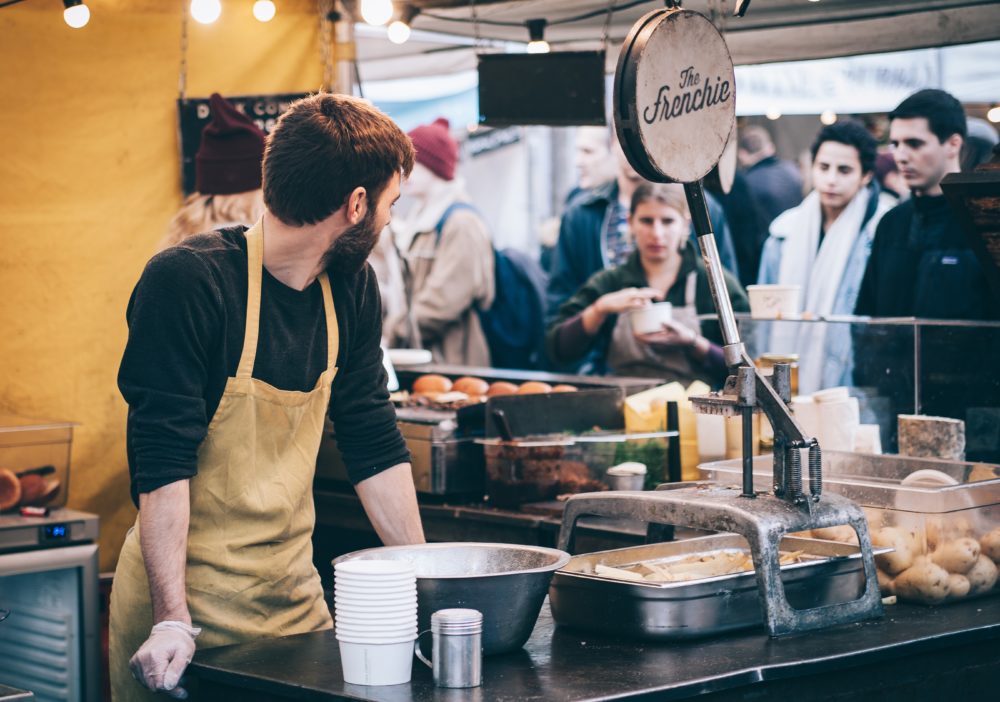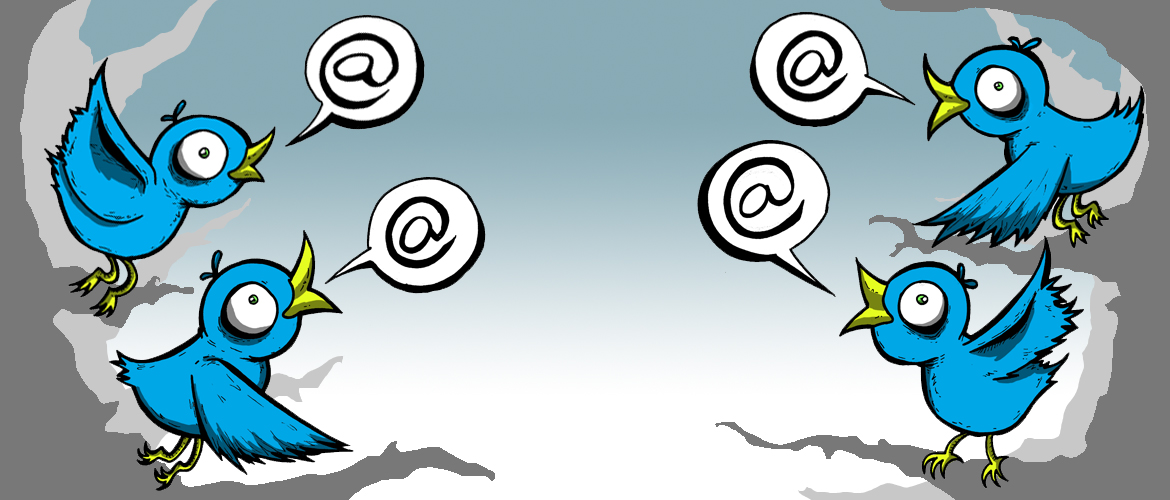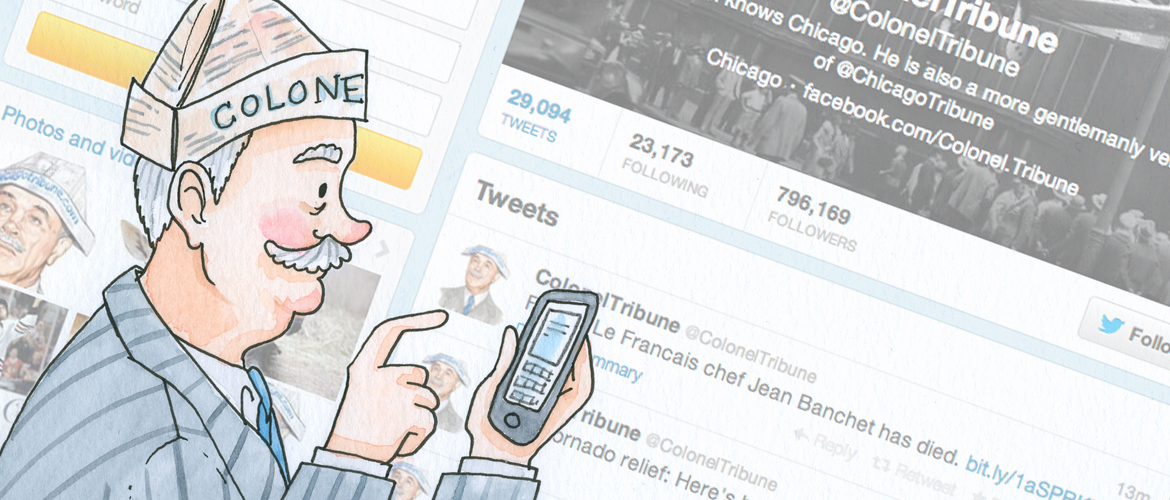Illustrated by Patrick Yurick
Facebook’s biggest fail wasn’t that they asked businesses to pay to increase Facebook visibility, but that they put all fans in a bucket and made them re-establish their loyalty just to see posts from their favorite brands and companies. Businesses hate it, and so do their fans. They signed up for updates, so why should Facebook determine which ones they see?
Remember the days when you could just post a link on Facebook, and optimistically guess how many people saw your link? When a post got no likes or comments, you just assumed you were doing something wrong and iterated. Typically, these iterations resulted in more likes and follows.
I’m not sure if there was ever a time when Facebook Business Pages got the same visibility as profile pages in any one person’s feed, but the one thing that’s for sure is that one big mystery everyone wants to solve is where their formerly attentive audience went.
The truth is that if you did truly have an attentive audience, the change in Facebook’s algorithm wouldn’t have given you a huge dent. The new algorithm is based on how engaged Facebook users are with your page. So, in theory, if they’d been visiting your page often and leaving comments, your page would still be showing up in their feed.
I think that’s where the “oopsie” happened. One of our clients has more than 500,000 very active and engaged users who comment and like their little hearts out of each post. But still, when Facebook dropped the sledgehammer, their once loyal fans disappeared out of nowhere.
After some time, fans started commenting on their page, asking why they didn’t see posts anymore. And then suddenly, the posts started showing up again, like magic.
That’s because every re-visit results in increased Facebook visibility.
And that’s where the frustration lies. What was once a very free marketing platform has, in essence, become a paid platform. Companies are used to paying for ads in newspapers, through AdSense, and to bulk-send their email addresses. However, they’re not accustomed to paying to deliver a message through Facebook.
The good news is that Facebook advertising is pretty cheap. The better news is that you don’t need to buy ads in order to increase visibility. Before you start creating an ad budget for Facebook, try these simple steps first. We’ve tried them with all of our clients and Facebook visibility has increased on an average post by 20% or more.
Start posting more photographs and illustrations.
We’ve found that photographs get more automatic visibility than any other type of post. When comparing a photo, text, and video post that all have no likes or comments, the photo post gets almost double visibility automatically.
In one test we ran with a client, their link posts had a typical Facebook reach of 10-20,000 fans while photo posts with a similar number of likes and comments got closer to 45,000 and sometimes reaching 68,000 if the photo had a quote in it. This test ran with a client that has an extremely dedicated fan base of more than 500,000 fans.
After our initial consult with them, they stopped posting traditional links and started posting more eye-catching photos. The captions for the photos became the typical teaser copy plus the URL to the article. These posts continue to be their most liked and shared posts.
For many of our clients who we’ve tested with, their “most popular post” is a photo with a quote on it. And I’ve been straight-up shocked to see that photos with faces in them get less likes than ones of projects, or ones that make you laugh.
Also, if you plan on replacing link posts with photo posts, start using trackable URLs (you can do this through Google Analytics or bit.ly) because Facebook won’t track those links.
Tag other businesses in your posts.
One way we’ve found that clients are able to increase their Facebook reach dramatically is by tagging other businesses in their posts.
A great way to do this is to become more dedicated to supporting your fellow like-minded businesses. For example, at Lantern, we like to write posts about our local businesses and give them virtual high-fives when they do something neat. Sometimes, we’ll write a case study about them, or include them in a list of businesses who are doing something cool. By tagging them in the post, we get in front of them and their fans, and we also give them some love for their hard work and marketing smarts.
The example to the right is by Style Me Pretty, who’s posting a centerpiece featured on their blog.
They’re using the above technique by featuring the photograph, and in the description they’re tagging all of the businesses who helped create it.
This strategy gets the post in front of all the businesses tagged, and increases the chances of it getting shared by those businesses and increasing visibility.
Come up with a dozen new ways to get more comments.
While Facebook clearly has a bias toward post type, in our tests, comments did increase each post’s visibility. In a comparison of two link posts with a difference of just 10 likes between them, the one with 11 comments had 20% more visibility.
Most businesses get more comments by asking questions, or making controversial statements. Passion for your niche and trade transfers well to your fans on Facebook and posts that reflect your passion typically elicit more feedback. Negative posts tended to get more comments, although I’d be careful there.
One of our clients hosts a weekly caption contest, asking fans to add a caption to their photo. So far, this has been their most successful attempt at getting comments, and the double-combo of photo and comments has made these their most popular posts.
When asking a question on a link post, some users are inclined to leave their comment on the post itself. When asked on a photo post, they leave the comment on the photo. Since your end-goal is probably driving traffic back to your website, you might want to switch it up so that you’re sending traffic to your site, but also increasing visibility through Facebook comments, too. One hand feeds the other.
This example on Car Talk’s Facebook page got 224 comments. Not only are they using the photo method we talked about, but they’re also linking to their blog, and asking a witty question that garnered serious feedback and visibility (look at all of those shares!). Check, check, and check!
Cross-promote from other networks.
2 days only – free shipping online and 20% off in stores! Visit on.fb.me/VuGtCm for more details.
– MoMA Design Store (@MoMAstore) December 10
Cross-posting is a bad habit. If you double-post on two different networks, eventually you’ll tire your followers/fans, and they’ll unsubscribe from one or the other. You need to interact differently on Facebook and Twitter to maintain subscribers to both.
Cross-promotion is different. In order to get your posts back in front of your fans, they need to revisit your page. Drive this traffic from your Twitter account, or other social networks. Create an email campaign out of it too. Try getting them back to your home page, and also directly to certain posts.
You can create short teaser copy, like “Do you like us?,” add a link, and BOOM. The point is to get them to click the link, that’s it, so don’t be a marketing jerk about it, but get creative.
Don’t count on video.
Well, not unless you’re crazy excited about it and have an arsenal of winning ideas. As video producers, we should be telling you to go crazy with the videos. But, in our research, we found that videos don’t get a lot of likes or shares on Facebook (or, not as compared to links or photos), so they didn’t get a lot of visibility, either.
Even promoted video posts don’t appear to break any significant visibility barriers, and their engagement numbers are minimal. Posts with embedded videos and ones that linked to video archives had the worst visibility in our tests.
 The trouble with video on Facebook is a combination of two things.
The trouble with video on Facebook is a combination of two things.
First, video requires audio, and so many people view Facebook in a place where they can’t necessarily turn their volume up.
Second, it’s a time commitment. If you want people to watch your video, add a more detailed description to your post and tell them how long they’re committing to.
But, remember, this post is about visibility. If you create an amazing video that isn’t seen by everyone but gets some of those people to buy/try your product/service, then you’ve still done all right!
Adams County Winery makes a lot of fun videos that they post to their Facebook page. They always add something to their description, like “Watch until the end!” or “It’ll make you laugh!” which makes their fans want to watch the video. That, plus their contagious enthusiasm, is the reason why their videos get more response than those of other small businesses we’ve analyzed.
Start conversations and Q&A chats.
One of our clients hosts a weekly “chat” on Facebook. I double-checked with a couple of other companies I know that do chats and their results were the same: big-time visibility. Hundreds to thousands of comments amount to some serious reach.
The trouble with this, which Lush discovered, is keeping up when you have hundreds of thousands of fans. So, it’s not exactly a scalable, but worth testing. Many end up moving the chat over to Twitter to organize the conversation a little more easily. Facebook is a wonderful community to jump-start this effort, though, and an even better way to increase visibility because every comment leads to more exposure.
Ask for people to “like” posts; create contests around “liking” posts.
 If I haven’t made this obvious yet, “likes” will increase your visibility almost as much as comments will. The more likes you get, the more Facebook reach your post will have.
If I haven’t made this obvious yet, “likes” will increase your visibility almost as much as comments will. The more likes you get, the more Facebook reach your post will have.
When comparing a very similar photo post – both were advertisements and marked as “featured” – the post that had 45 likes only got 2,300 people to see it, while the one with 243 likes had more than 10,000 views.
As mentioned, different post types require more likes to get increased visibility. For example, a photo post might only need 10 likes to increase visibility by 20%, but a link post would require twenty.
GrubHub has a habit of posting mouthwatering treats that anyone would “like.” They’re actually a great example of a businesses who use creative images to their advantage, so check out their Facebook page when you’re done with this post (almost there!).
Think more about strategic timing.
Not surprisingly, the average workday, according to Eastern Standard Time, reflects the time with most engagement, especially between 5am and 9am, lunch hours, and the few hours after work. After 9pm, engagement starts to trickle. Weekends seem to work well, too, especially for likes.
This is possibly because people, especially businesses, post less on the weekends, making it your time to stand out in a less saturated feed.
The TL;DR Version
Post more photographs, and use trackable links when you do so. Use every way possible to get people to revisit your Facebook page through other social networks and through email. Get as many comments as possible, through chats and provocative posts. Tag others in your posts to increase visibility on their page, too.







